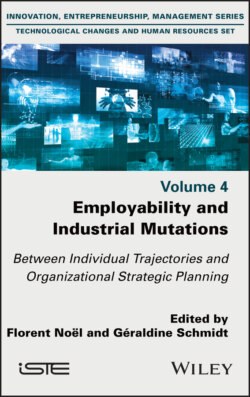Читать книгу Employability and Industrial Mutations - Группа авторов - Страница 22
1.2.2. Employability between individual capacity and collective construction
ОглавлениеInteractive employability is caught up in a bundle of processes, some of which are initiated by or depend on the reaction of individuals, and others which depend on collective interactions, whether they are linked to placement or training policies, or to company practices with their repercussions on the ability of workers to orient themselves and to act. Most of the contributions presented in our first part can therefore shed light on one or another facet of employability.
Two perspectives are currently being explored, which deepen the collective dimensions and could eventually lead to new operational definitions. They are characterized by the fact that they are based on other concepts from theories of action, such as “capacities”, empowerment or “functionalities”.
The first, explained by Dutch sociologists (Pruijt and Yerkes 2014), favors an approach based on empowerment, the ability to act autonomously. It focuses on strategic and negotiated interactions between groups of actors and proposes to define employability as “empowerment in the career field”. Such a definition is well adapted to current practices of career construction and securing professional paths, emphasizing the resources available to such and such groups as well as their perceptions. Based on a self-perceived employability scale adapted from Rothwell and Arnold (2007), the empirical study by Bourguignon et al. (2015) explores the links between this and the intensity of employees’ union involvement, showing that these links are ambivalent: the feeling of being highly employable can both encourage disengagement or strengthen collective action. This work then returns to the critical analysis of policies centered on individual employability, which combine in an unstable way domination and freedom, therapy, rhetoric and concrete actions, but by insisting on the margins of maneuver which the unemployed or employees can seize.
Another perspective seeks to capture a set of broader interactions including, most often in a given territory, processes of anticipation, creation or maintenance of activities at the same time as processes of acquisition, development or, on the contrary, atrophy of skills (Bruggeman et al. 2012). Employability can then be defined as “the ability of a group of skilled and redeployable workers to attract capital and activities to obtain quality jobs”. The aim is to identify virtuous or vicious circles associating networked skills and jobs. The result is a focus on processes of collective destruction/reconstruction of employability, such as can be observed during restructurings with cumulative losses of jobs, income, cognitive abilities and social networks.
In short, in the field of public policy, work is beginning to appear that gives substance to the idea of employability as a collective construct that may or may not open up spaces for individual initiative.
This shift to the collective must be supported by linking employability and work, and thus presupposes an opening up of the perspective restricted to public policies for placing the unemployed: by first explaining the contribution, or even the influence, of companies on the employability of their employees, whether it results from their actions or their inactions. This is how it is possible to identify very different capacities for professional transitions among employees, depending on the type of company to which they belong or have belonged (Korver and Schmidt 2012).
It is also necessary to mobilize an explicit theory of choice and empowerment. The sociology of capabilities (Zimmermann 2011) provides a particularly relevant one, showing how, in different contexts, with different resources and different abilities to use them, workers may or may not find room for maneuver and progress. Reference to Sen (Sen 2009) and his theory of capabilities is essential. Isn’t employability a “capability”, one of the most important in economies where the fate of the majority of people is decided on the labor markets? But at the beginning of the 2020s, this rapprochement remains a research program, because this theory must necessarily be enriched and amended, in order to take into account the existence not only of final “capabilities”, opening up access to individual choices and lifestyles (which is what Sen limits himself to) and also, with employability, of capabilities expressed and validated on the labor market, and therefore intermediate and, to some extent, collective.
An illustration of what institutional collective capacities can be is given in the work of Bruggeman et al. (2012) on restructuring. It leads to the outline of three “functionalities” (defined as the availability of collective capacities for action) that should be put in place jointly to equip local labor markets and the productive and social fabrics on which they depend: involving the relevant actors in the management of productive change; developing employability; and steering the local job supply. Employability is one of the several functions, dependent on two others that give it meaning and support, and consists of developing the employability of workers in their jobs and organizing fair transitions for all in the event of restructuring. In France, the GPEC (Gestion prévisionnelle de l’emploi et des compétences, Forward Planning of Employment and Skills) agreements which explicitly include employability prefigure, in a partial manner and for the favored workers of large firms, the type of approach outlined here.
